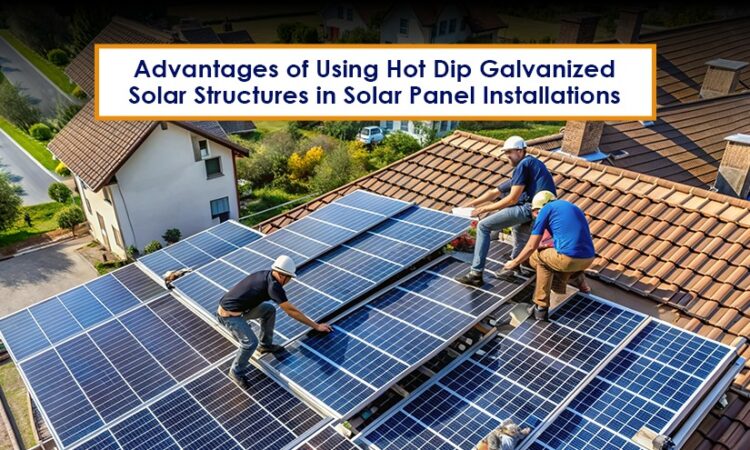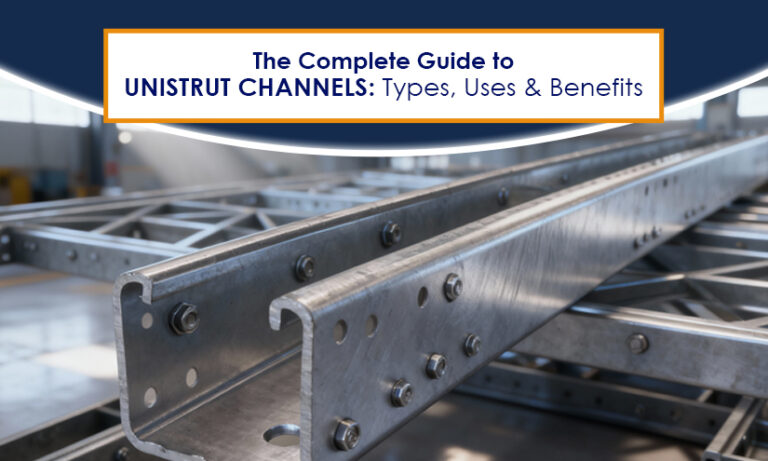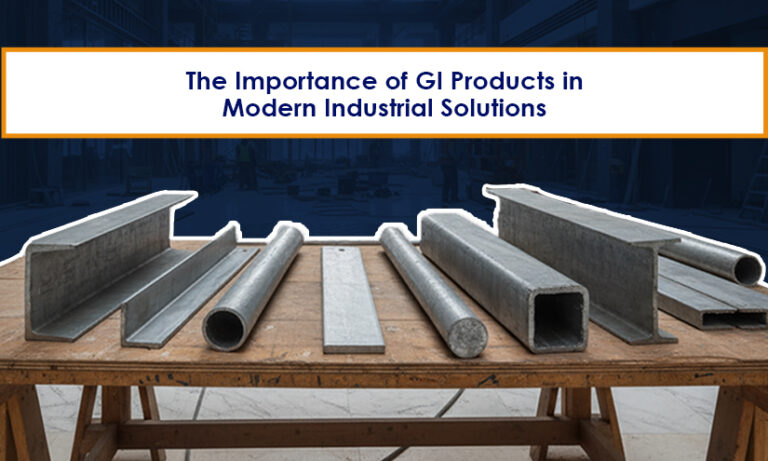Advantages of Using Hot-Dip Galvanized Solar Structures in Solar Panel Installations
As the globe moves towards cleaner energy sources, solar power is taking center stage. As global focus on sustainability continues to grow, the installation of solar panels has seen an explosion in demand. From vast utility-scale solar farms to small rooftop installations, the performance and lifespan of these systems are greatly influenced by the components installed—most particularly the support structures. These structures not only support the solar panels but also keep them protected from the elements, maximizing performance and lifespan.
Long-Term Returns Come with Durable Structures
In a solar power system, where panels and inverters take center stage, the mounting system works behind the scenes to play a crucial role. It’s not merely a question of choosing the right solar structure material as stability is concerned but making sure the whole system operates efficiently for decades to come. That’s where hot dip galvanized (HDG) solar structures fit in—offering strength, durability, and unparalleled protection in various conditions.
What is a Hot Dip Galvanized Solar Structure?
A hot dip galvanized solar frame is a mounting or support structure constructed of steel pieces that have been subjected to the hot dip galvanizing process. This entails dipping fabricated steel in a pool of molten zinc at around 450°C. When the steel is allowed to cool, the zinc develops a metallurgical bond with the steel surface to produce a galvanized zinc coating with higher corrosion protection.
Traditional components employed in solar structures galvanized by hot dip include galvanized steel beams, GI angles, and galvanized C channels. These components provide the foundation of solar panel structures, with both load capacity and long-term durability. Galvanized coating proves to be a barrier against moisture, chemicals, and other corrosive substances—hence, it is perfect for long-term outdoor applications.
Why Galvanized Structures Matter in Solar Installations
Solar panel installations should last for at least 25 years. Under these years, buildings are constantly subjected to severe environmental factors such as humidity, rain, UV exposure, and even sea salt air on coastal regions. If the solar mounting structure starts to weaken or rust, the entire solar system can lose its integrity.
This is why the application of GI structures for solar panels, especially hot dip galvanized solar structures, is essential. They are resilient to weather conditions while requiring minimal maintenance, which makes them a sought-after option for structural solar panels on residential, commercial, as well as utility-scale projects.
7 Most Important Benefits of HDG Structures for Solar Farms
1. Better Corrosion Resistance
The hot dip galvanizing process applies a consistent, hard zinc coating that protects steel from corrosion and rust. In harsh deserts or along the coastlines, galvanized solar structures resist wear and tear. This means less repair and replacement, which translates to cost savings over years.
2. Extended Lifespan
Hot dip galvanized steel frames provide 25- to 50-year lifetimes, based on exposure conditions. For solar installations designed to last for decades, this translates into fewer structural issues and improved ROI in the long term.
3. Few Maintenance Needs
Galvanized coatings are upkeep-free for decades. While painted or powder-coated structures may need to be touched up periodically, HDG solar mounting structures are still well-protected without regular maintenance. This is especially handy in out-of-the-way or inaccessible installations.
4. Load-Bearing Strength
Galvanized C channels, GI angles, and steel beams provide excellent structural strength, making them stable in all weather conditions and terrains. They are able to bear fixed and tracking solar panel systems comfortably without deforming or failing.
5. Cost-Effective Throughout the Life of the Project
Though HDG structures could have a slightly higher initial investment compared to alternatives, they provide substantial savings in the long term through lower maintenance, fewer replacements, and less downtime. Their longevity equates to lower total cost of ownership.
6. Environmentally Friendly
Hot dip galvanization extends the usable life of steel, reducing the need for frequent replacements and conserving raw materials. Zinc, used in the galvanizing process, is also 100% recyclable. Thus, GI solar structures align with the sustainability goals that solar energy itself promotes.
7. Rapid Installation and Project Efficiency
Pre-galvanized and pre-fabricated parts such as GI angles and galvanized steel beams are convenient to transport and join. Their accurate sizes and even coating make on-site construction easy, saving labor costs and project time.
Conclusion
In the dynamic solar energy market, the relevance of long-lasting, cost-effective, and eco-friendly structures cannot be emphasized enough. Hot dip galvanized solar structures with their established performance and durability are the preferred option for dependable solar mounting systems.
For solar developers, EPC contractors, and investors seeking peace of mind and long-term value, Parco Engineers provides expertly designed GI structures for solar panels that last the test of time.
Select Parco Engineers for your next solar project—where quality and performance come together, powered by the strength of hot-dip galvanized steel.



